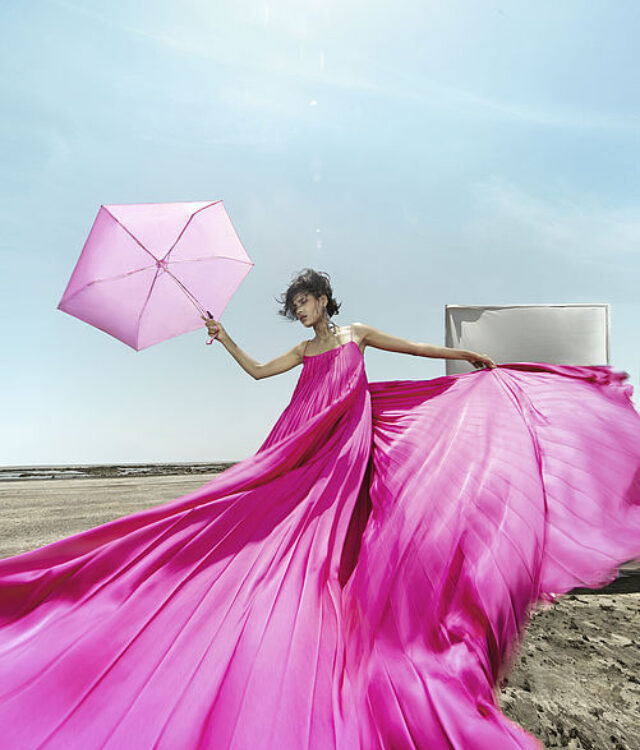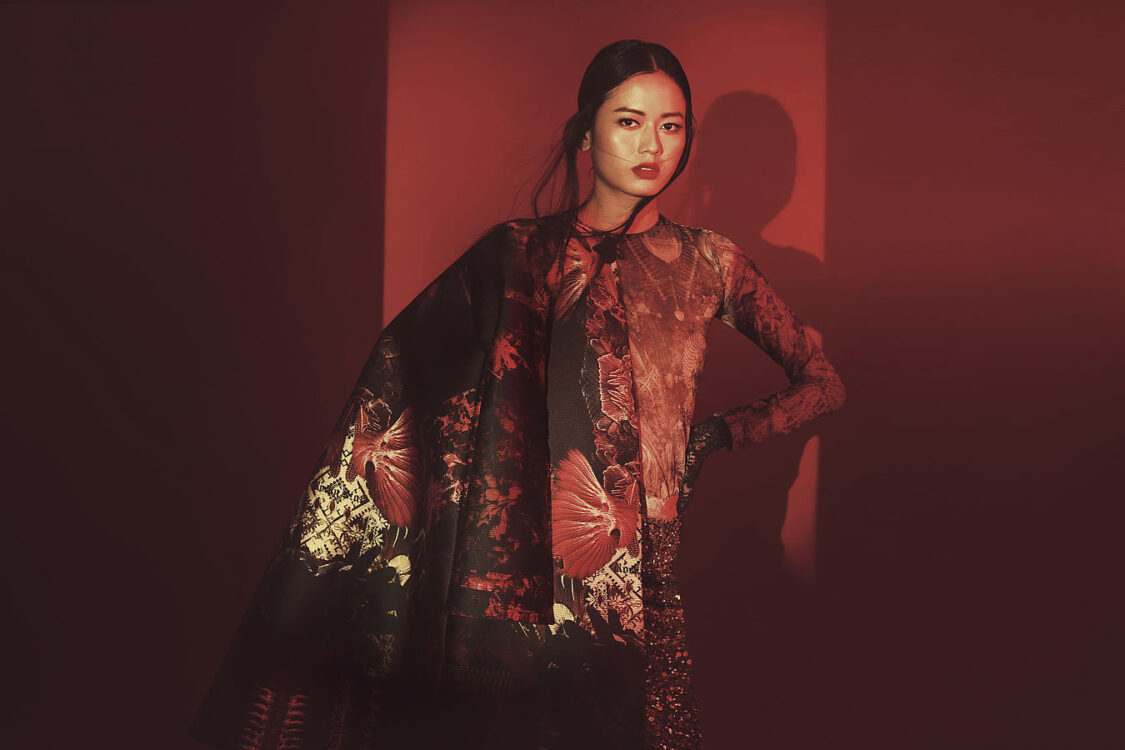
Lighting becomes an extremely important factor whenever I plan my conceptual fashion projects. It always plays the key part in delivering not just the mood, but also the idea of my final images. Many times, it helped me symbolically convey my message. Light has a language on its own. I want my light to speak.
So it's no surprise that for my recent projects I tried again a new approach and experimented with the lighting set up.
«Rise of the Phoenix» represents my take on passions in our lives. We tend to think of passion as the fire that eventually will burn out. When we feel that it's gone, we start searching for a replacement – a new profession, new relationship, new hobby. With sadness we accept that the feeling once so bright is over and we won't feel the same way again.

I like to compare passion with the mythical Phoenix creature. It burns bright until it is alive. After its life is ending, it resurrects from the ashes as a hatchling again. Our passions are not finite. But there will be peaks that may lead to burnouts. However, if at that moment, we don’t give up on our passion, it will come back again – a small creature for us to nurture into a full-fledged bird.
I wanted the theme colours to symbolize the phoenix and the passions in our lives as well as reflect on the transitions. I chose red because it represents my idea the best – from red orange to deem maroon red and back to intense red.
This time, I wanted to use my lights to not only tell the story with colours but rather also shapes. With the structured and geometric light, I wanted to give tribute to the oriental Chinese legacy in which the Phoenix represents femininity and is considered the king of all birds. The oriental motives were additionally supported by styling as well.

Since I wanted shapes and lines in my images, I chose my favourite lamp for these tasks – the broncolor Picolite. It is unmatched in terms of clean cuts and crispy lines as well as very convenient when introducing smaller shapes that can be used for portraits. Other lights usually have a lot of limitations and are not able to perform as accurate as the Picolite.

For my first setup, I have used the Picolite as my key light as well as for the background shape by directing it through my model and onto the background. I also used a MobiLED with a Strip Softbox attached from the left on low intensity. To keep the mood fiery, I added a Siros 800L with a Octabox and red gel.
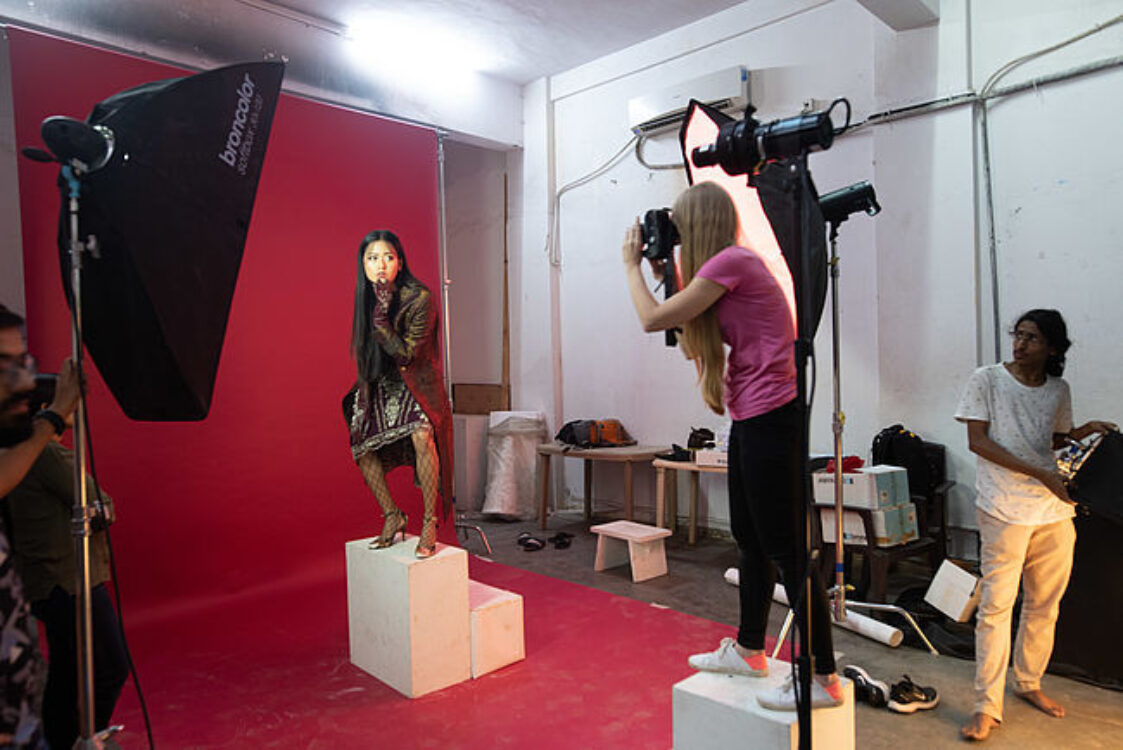
Next set featured a similar principle. This time, I kept my Strip Softbox on the intensity close to that of the Octabox to give more dimension to my model. I adjusted the Picolite, so it would create a triangle shape for this set. I also added a small Softbox at the bottom front to highlight the pedestal where the model was standing on.

For the darker shot, I kept the Octabox off and used only the Picolite, Softbox and the Strip Softbox.

The next setup was a transition set representing the moment of the Phoenix approaching its burn out. I wanted to stay in line with the theme but add a bit of a twist. So, I used my Octabox with red gel for the model's face but added two open bulbs that were bounced off the metallic surface – one on the background, one on my model.

Even though, I did not use any gel on the bulbs, the colour difference of the light itself added a colder shade to the images which in some shots provided a beautiful rim on my model. For some portraits I switched off the open bulb that was directed towards my model and only kept it for the background.


On the fourth set, I went back to the Picolite and the triangle shape. This time I arranged a darker setting. I kept the Siros 800L with the Octabox on but on minimal intensity to just slightly include red colour in my frame. I wanted the triangle to be a bit softer and much smaller than previously on the model's face.
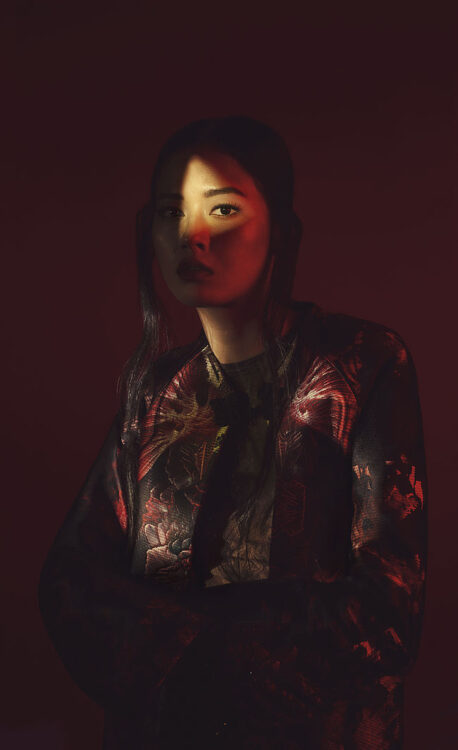
At the same time, I used an additional light to highlight the outfit a bit and to add mystery to the shot. For this task, I used the MobiLED with a snoot. I narrowed the snoot output further by using a black cut-out. I directed it a bit below the model's face, which afterwards looked unintentional and effortless.

On set 5, I used the Picolite – Octabox duet again. This time, I wanted to use the Picolite on a bigger scale. Having the Octabox on minimal intensity still, I adjusted the Picolite shutters wide apart to create a wider lane effect on the model and the background. It created a beautiful structured and clean light.
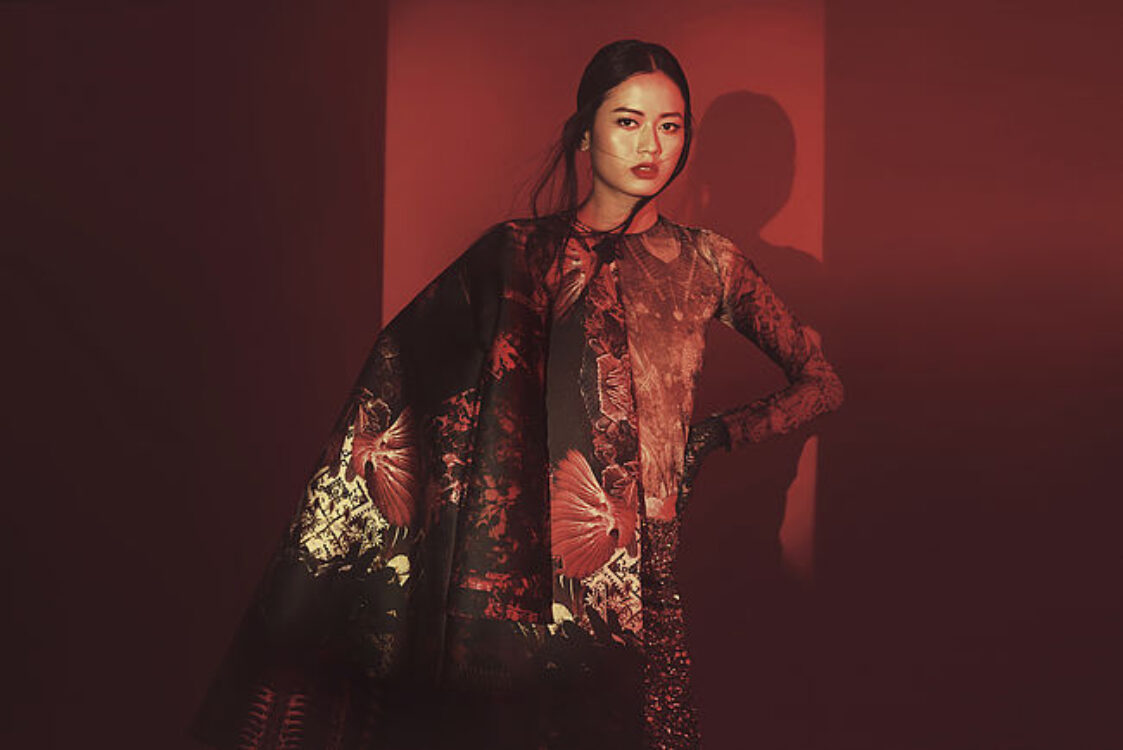
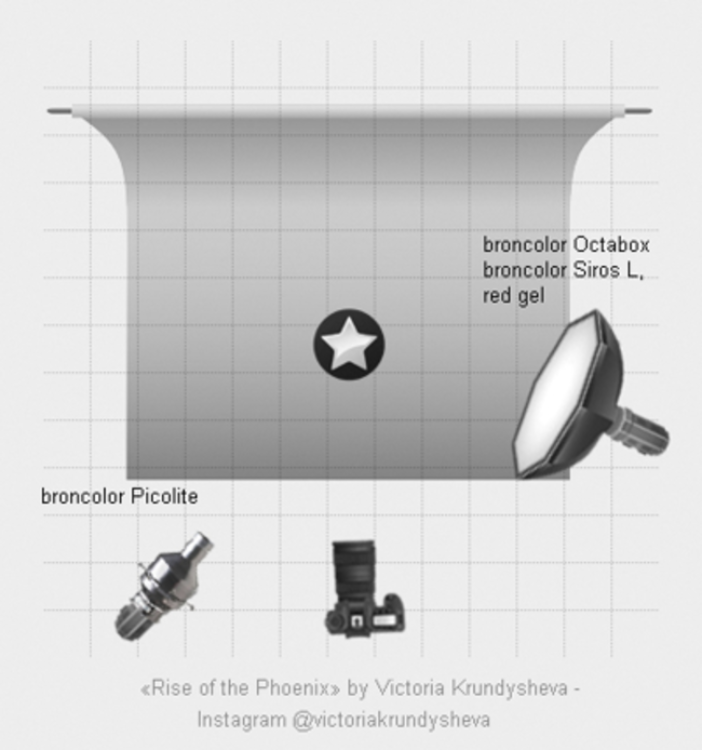
For one shot, I shut off the Picolite, achieving a stylised cinematic red with just the Siros 800L and the Octabox.
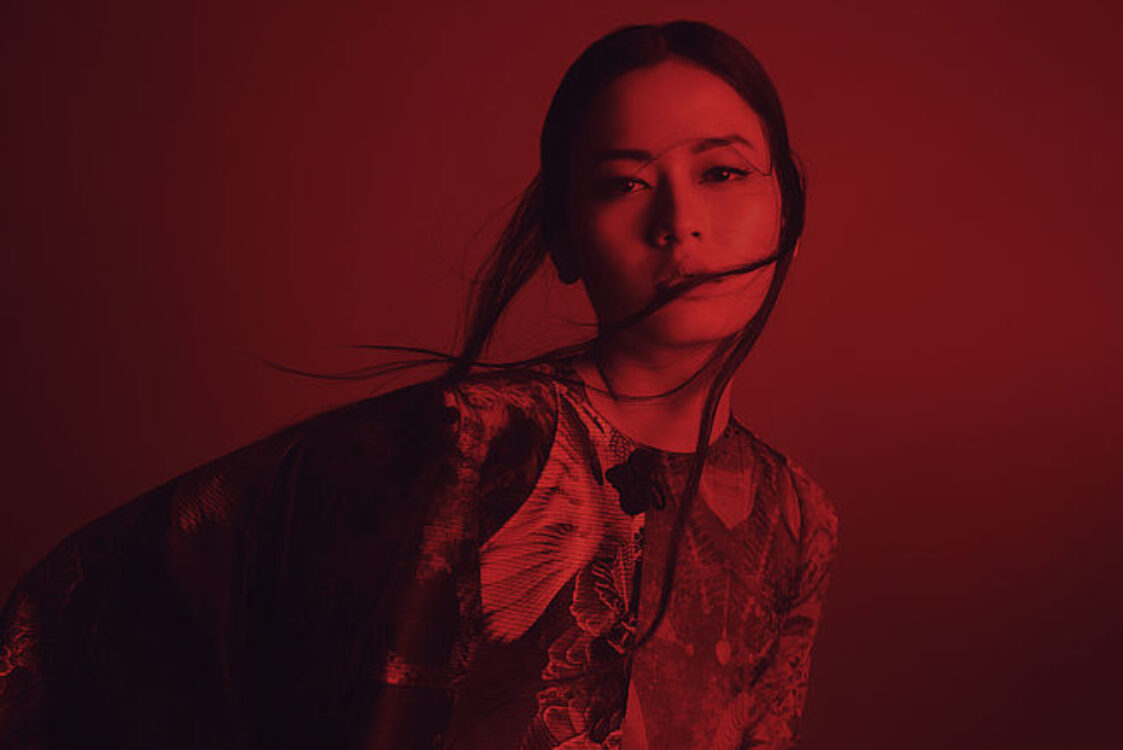
For my last set, I decided to switch it up a bit. This is the Phoenix in its prime – dramatic deep red. I have kept the Siros 800L with a Softbox and red gel from the top right side as my key light. For the fill, I used a MobiLED with an Octabox on the opposite side of the Siros 800L. And for the dramatic effect, I placed MobiLED with a Strip Softbox directed towards the background behind my model. It provided an exciting gradient behind the model and created additional emphasis for the front of my frame.








